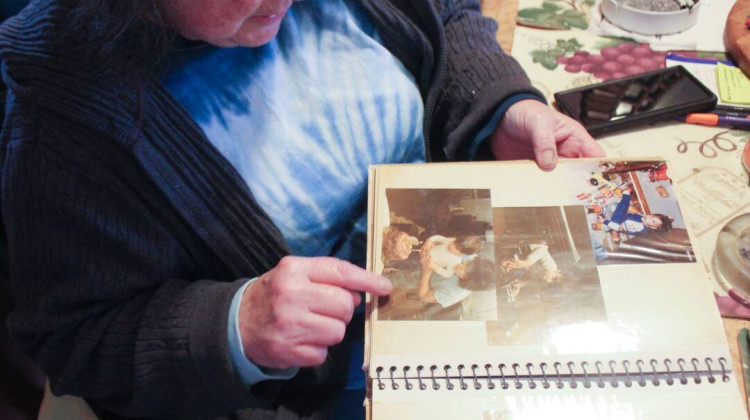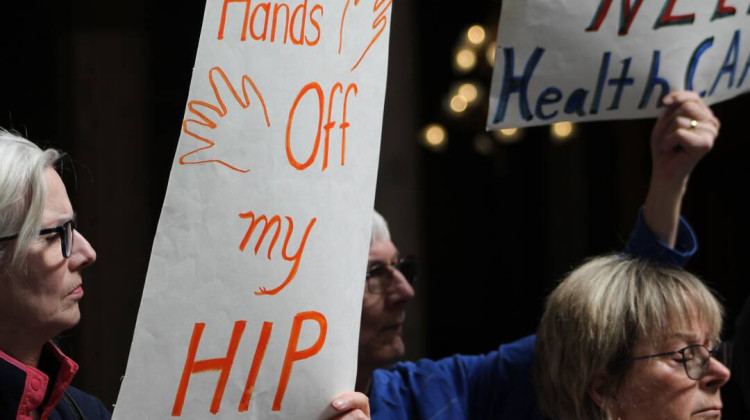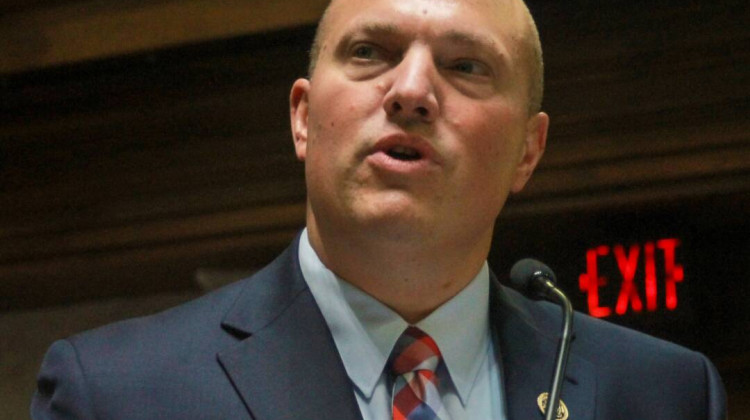
Restaurants across the state were able to reopen in the second week of May during Gov. Eric Holcomb's "Back On Track" plan's Stage 2.
Lauren Chapman/IPB NewsThe Indiana State Department of Health reported 23 additional confirmed deaths over the weekend, bringing the state’s total to 2,350. The state announced more than 42,000 total confirmed cases, with nearly 412,000 Hoosiers tested.
Study: State, Local Governments Face Challenges, Tax Losses From COVID-19
As state officials work to figure out how to address tax revenue losses due to COVID-19, local governments are facing shortfalls of their own.
A recent study by Ball State University economists shows local county-level revenues may be down an average of between 2.4 and 6.8 percent this year from 2019. Some areas of the state could have losses of up to 48 percent, hitting harder in counties that rely on businesses considered more “at-risk” like casino revenue, or innkeepers’ tax.
The study looks at several possible scenarios for the current recession caused by the coronavirus pandemic. Ball State economist Michael Hicks says the original recession expectation was more V-shaped, but recent more permanent job losses have changed that forecast.
Indiana Workforce Cabinet Gets $2.25 Million For Rapid Recovery Plan
The Indiana Governor’s Workforce Cabinet is getting more than $2 million to support the state’s Rapid Recovery Plan. It’s intended to help with workforce training programs and career coaching in light of the pandemic.
The Indianapolis-headquartered Strada Education Network granted the money. It will support data collection that makes sure the cabinet’s education programs are linked to employment in high-demand jobs or a certification. The grant is in addition to $50 million already allocated to the plan through the state’s CARES Act allotment.
After Months Of Lockdown, Indiana Long-Term Care Facilities Starting To Allow Some Visitors
Visitors were allowed back to Indiana’s nursing homes last week with restrictions as Indiana entered Stage 4 of Gov. Holcomb’s reopening plan. Despite many rules still in place, professionals who work with older Hoosiers are happy for the changes.
Residents of Indiana’s long-term care facilities have not been able to see friends and relatives in person since the state largely shut down in March. As the state slowly opened in stages the last several weeks, nothing changed for nursing homes and similar facilities – until last week. That’s when new guidelines in line with Indiana State Department of Health regulations were announced for visiting long-term care facilities.
Visits will mainly be outdoors.
Indiana's May Unemployment Rate Drops Significantly, But Still Elevated
Indiana’s unemployment rate fell more than 5 percent in May according to data released from the Bureau of Labor Statistics Friday. However, the same report revised April’s rate upwards from what was already a record high.
Indiana’s unemployment rate fell to 12.3 percent last month, from a revised April rate of 17.5 percent. According to BLS, that one-month decrease is the third largest in the country.
The state says it was largely driven by workers returning to jobs in restaurants, manufacturing facilities and education or health services.
Pandemic Causes Food Prices To Spike Throughout The Nation
Food prices increased by 4 percent through May, according to the Bureau of Labor and Statistics.
The Indiana Farm Bureau says the big issue with food prices increasing isn’t a lack of supply, it’s a logistics problem. A sudden shift in demand during the coronavirus quarantine caught many suppliers off guard.
“70 percent of our bacon was consumed through restaurants,” says Indiana Farm Bureau President Randy Kron.
Join the conversation and sign up for the Indiana 2020 Two-Way. Text "elections" to 73224. Your comments and questions in response to our weekly text help us find the answers you need on COVID-19 and the 2020 election.
With restaurants and institutions shuttered, no one was using all that bulk meat, which would explain why beef prices skyrocketed at the grocery store.
“The packing plants had to package it differently, and they were not prepared to be doing that differently, to ship to grocery stores, and not to restaurants,” Kron says.
To make matters worse, cases of COVID-19 in Cass County spiked, causing the Tyson meat packing plant in Logansport to close for two weeks.
It’s not just meat; dairy and egg prices also increased in May.
State Told Local Health Departments How To Hide Long-Term Care Data: Here's What We Found
Long-term care facilities across Indiana are disproportionately affected by COVID-19. A lack of reliable data is crippling the response.
Since April, Indiana has been collecting daily COVID-19 updates from every long-term care facility in the state. Yet, after months of prying from journalists and trade organizations, state health officials insist on keeping the data from the public.
In the Midwest, Indiana is alone. Ohio, Illinois, Michigan and Kentucky all provide public, facility-level updates on COVID-19 in long-term facilities.
Many Indiana counties are analyzing data the Indiana State Department of Health is collecting to inform decisions. Some have opted to make it public, others have not.
Around a half dozen Indiana counties say they received direct guidance from ISDH not to release facility-level data to the public.
That's something the state denies.
“To my knowledge, no one from the Indiana State Department of Health has ever directed anybody that they should not release their data,” State Health Commissioner Dr. Kristina Box said during a press briefing last week. “We have supported them releasing their data if they desire to release their data.”
Privately, the department opts for a different tone. Earlier this month, the department’s Deputy Health Commissioner and State Epidemiologist Pam Pontones provided talking points during a webinar for local health departments not releasing data.
“If you are asked why you aren’t receiving facility-specific information you can reference you are following the communication guidelines for long-term care facilities on the link on the slide,” Pontones said.
Local health departments say they’ve received directives via email and over the phone from ISDH representatives not to release data.
Ball State Asks Board For More Time For Next Year’s Budget
Ball State trustees have approved what the university president is calling an “unusual approach” to next year’s budget for the Muncie school. Colleges everywhere are looking at smaller budgets because of the coronavirus pandemic.
Instead of presenting a budget for fiscal year 2021 on Friday, trustees approved what’s called a “continuing authorization” – which allows the university to continue spending like the board approved during fiscal year 2020.
Ball State President Geoffrey Mearns says that will give the school time to confirm student enrollment at the beginning of the academic year, so it knows how much money it will actually have. Mearns says he’s optimistic about enrollment. Right now, returning student registration is stable and freshman enrollment is down only a small amount. But he’s also cautious.
“But we also have to recognize that a registration in June is very different than a student who will enroll in this environment in two months,” Mearns says. “So this is an extraordinarily unpredictable environment.”
The university says it will end fiscal year 2020 in the black. Mearns says it will reinvest some of that money into the costs of modifying the campus for the return of students in August – extra cleaning and sanitizing; buying personal protective equipment for staff, students, and classroom barriers; and costs to spread out students in dorms and dining halls.
And when it presents a real budget in September, Mearns says that plan will show decreased spending.
Contact Lauren at lchapman@wfyi.org or follow her on Twitter at @laurenechapman_.
 DONATE
DONATE






 Support WFYI. We can't do it without you.
Support WFYI. We can't do it without you.